Scene-Stealers staff writer Warren Cantrell‘s debut novel Obvious Child is out April 3. In celebration, here’s another acid-tongued Top 10 list like no one else can deliver! – ed.
We’ve all seen these movies. Yes, on more occasions than most of us would like to admit, we’ve been suckered into a theater because of the heavy artillery a studio has wheeled up to the gate via their casting department. It’s a dirty trick, for valued, trusted names carry a lot of weight amongst audiences, and they influence what a person decides when choosing a feature. Yet sometimes it’s just an illusion, a shell game designed to lure a person in just long enough to get their money. Once the mark is clued into the scam it’s almost always too late, however, for the veritable card table is usually folded up and gone before the first act is over, at which point the bait and switch has taken place and audiences are left slack-jawed and wide-eyed before a screen with more trash coming out of it than an industrial compactor.
Today’s list casts a little well-deserved shame upon a few of the most egregious offenders in this regard, for the films listed below had casts capable of a cinematic home run, yet took any number of miss-steps as it concerned the script, direction, or other basic components of the production. And while it is definitely true that actors don’t make or break pictures all by themselves, they can elevate a mediocre picture into something decent, and something decent into a work of art that will outlive any of the people involved in its creation. That’s why it is especially baffling when a movie has all the high-end acting talent in the world and still finds a way to shit the bed.
Thus, to make today’s list, the production had to boast at least four A-list actors in a movie so universally reviled that there could be no argument about its quality. Sure, there’s always going to be a few apologists out there, but if a movie was panned by all the major critics, and struggled at the box office, then it got a serious look for a spot in today’s ranking. A special pass was awarded to any sequels or direct follow-ups, for while this does nothing for a movie in terms of its respectability, its failure is at least a bit more understandable (as a studio was almost certainly just trying to capture lightening in a bottle for a second time). Again, these film don’t get any real “pass” in the general topic of conversation as it concerns terrible movies with a spectacular cast, it just makes their existence a little less baffling when set beside other mind-boggling productions that had everything going for them, and still stumbled.
As a result, you’re not going to see Ocean’s 12, A Night at the Museum 2, Caddyshack 2, The Phantom Menace, or Be Cool on this list. Yes, each of these movies was absolute, unquestioned garbage, but the assembly of their respective casts and the reasoning behind the films’ production aren’t as questionable as, say…
Although Death to Smoochy has been the recipient of a fair amount of revisionist love these last couple of years, make no mistake about it: This was a disaster. The picture was a dark, surprisingly mean-spirited story about the changing of the guard on a children’s television show, and starred Robin Williams (as Randolph, the corrupt program host) and Edward Norton (as Mopes, Randolph’s replacement). Supporting work was turned in by Catherine Keener, Danny DeVito (also director), and Jon Stewart, who all appeared to be trying their best in a film with an inconsistent tone, a schizophrenic plot structure, and characters so unlikable that audiences had nobody (literally no one) to root for. Oh, and speaking of audiences, they pretty much stayed away from this one after the near-unanimous bad reviews started pouring in. Roger Ebert was notoriously harsh on Death to Smoochy, as he wrote, “Only enormously talented people could have made Death to Smoochy. Those with lesser gifts would have lacked the nerve to make a film so bad, so miscalculated, so lacking any connection with any possible audience.” Burn. As far as the commercial realm was concerned, the movie only made a little over $8 million on a budget of $50 million, making it a certifiable disaster. Still, on the whole, anyway, this wasn’t as big a disaster as…
9. Swing Kids (1993)
Who the fuck green-lit this one? Seriously, whichever studio suit OK’d production on a movie about jazz and swing-mad kids yuking it up in pre-war Nazi Germany should have been fired (and if there’s any justice in the world, he or she was). Swing Kids told the story of a handful of teenagers hacking their way through late-adolescence, all while navigating the sometimes-tricky world of totalitarian Nazi rule. Yes, set in German on the eve of World War II, the movie’s main characters had just two worries: the murderous and ruthless rule of their country’s Nazi regime, and swing dance! As anyone who has seen this movie can tell you, the two separate components of Swing Kids never really jived, and gave the entire experience a decidedly uneven feel. At one moment, the main characters were laughing and back-slapping on their way from a club, the next they were witnessing the prelude to genocide. Yeah, despite an impressive collection of actors that included Christian Bale, Kenneth Branagh, Robert Sean Leonard, Barbara Hershey, Noah Wyle, and Frank Whaley, this one made back just $5.6 million against its $19,000,000 budget. A staggering failure it may have been, Swing Kids gets a little bit of a pass because its leads weren’t as well-known at the time of the movie’s production as they are now. This next picture captured its stars more or less in their prime, however…
The only reason this one didn’t rank higher on the list was because it made its money back in international markets (although it only earned $46 mill. of its $60 million budget back on domestic returns). The hyper-violent, shallow, contrived mess that was Gangster Squad didn’t take any chances with its plot or its characters, and opted instead to just cookie-cut both using molds from The Untouchables and the Lethal Weapon franchise. The similarities between those films and Gangster Squad are only skin-deep, however, as the level of character development for just one character from just one Lethal Weapon scene far outstrips anything Gangster Squad put together for any member of its cast. Seriously, the maturity and depth of what’s on display here never exceeded what one might expect out of an intensely caffeinated thirteen year old boy. And boy oh boy, did Gangster Squad ever have a cast backing it up. Josh Brolin, Emma Stone, Sean Penn, Ryan Gosling, Nick Nolte, and Robert Patrick all showed up for this one, and were all utterly wasted on a movie that wasn’t worth the cost of its props budget. The conceit of the plot was laughable, yet took a back seat to the movie’s flat performances, uninspired dialogue, and needlessly gratuitous violence. Again, considering the cast that was assembled for this one, it’s astonishing how badly things turned out. Still, Gangster Squad had nothing on this next film in terms of piss-poor quality…
With a budget of $58 million, this one didn’t even crack $50 million, and was a clear-cut loss for 20th Century Fox. And while its cast was not what one might consider stacked (at least not compared to come of the others listed today), considering the fact that it boasted Terrence Howard, Cuba Gooding, Jr., Bryan Cranston, and Michael B. Jordan along with a writing/producing credit from George Lucas, Red Tails should have done/been better. The highly-dramatized story of the African American Tuskegee pilots of World War II, the movie had preposterous dialogue, an uneven tone, dreadful pacing, and a two hour running time that felt like three. Lucas engaged in the cursory publicity tour in advance of the film’s release, and made a lot of noise about his difficulties getting Red Tails made as a result of institutionalized industry racism. And while that may have been a factor during pre-production, this bias had little to do with the film’s eventual box office take, which accurately reflected the product’s quality (or lack thereof). True to his Star Wars background, Lucas made sure that the air-to-air action sequences were crisp and well-choreographed, and that the scenes buffering the insufferable dialogue sequences were tolerable, yet overall, the thing was a hot mess.
6. The Misfits (1961)
Something of a PR disaster at the time of its release, the subsequent fate of the two primary leads of The Misfits only added to its infamous reputation. Clark Cable, probably owing to the fact that the 59-year old insisted on doing all his own stunts in the 100+-degree Nevada desert, had a heart attack two days after filming wrapped on The Misfits, and died less than two weeks later. Marilyn Monroe lasted a little longer, though not much, and O.D.’d a little over a year later. Co-star Eli Wallach has given interviews in the intervening years that outline just how drunk director John Huston was on set during filming (it was a lot), and the film’s production put the final nail into the coffin of Marilyn and Arthur Miller’s marriage (Miller also penned the movie’s screenplay). So, in sum, The Misfits more or less killed two of its stars, drove its director into a bottle, and helped destroy a marriage. It was considered a box office bomb at the time of its release, although rentals and sales of the film have put it back in the black during the last few decades. This stunning achievement (that it actually made a few bucks) was the only thing keeping this one from moving higher up in the ranking, for with a cast that included Gable, Monroe, Wallach, and Montgomery Clift, and a director like the legendary John Huston behind the camera (and Arthur Miller with a writing credit), this one could have been something truly special.
Ugh, what a waste. A lot of exceedingly stupid movies are made in any given year, yet this one had all sorts of promise. A biopic that centered around aviation and Women’s Rights icon Amelia Earhart, Amelia did what most people thought was impossible: it turned an exciting, interesting life into a dull, rudderless movie. After all, Amelia centered on the last decade or so of Earhart’s life, and tracked her personal growth from a nobody to an internationally recognized public figure. The story of her relationship with George Putnam, Earhart’s publicist and future husband, co-mingled with the surprising circumstances surrounding her rise to fame, should have all added up to make one hell of a cinematic whiz-banger! Well, it didn’t. The performances were flat, the drama poorly scripted, and the overall flavor left a sour taste in the mouths of audiences. Despite the fact that Amelia Earhart acted as an inspiration to generations of men, women, and aviators, none of the magnetic qualities that inspired this came through the screen. And it certainly wasn’t because of a lack of acting talent! Two-time Oscar winner Hilary Swank played Earhart, and she had the support of Richard Gere, Ewan McGregor, Christopher Eccleston, and Mia Wasikowska. The reviews were bad, and word-of-mouth wasn’t any better, leading to less than half of the $40,000,000 budget getting recouped at the box office. Fail.
This production has gone down as an industry legend, for Warren Beatty made about as big a mess as any one person could possibly manage with his handling of Town and Country. This has already been discussed at some length in the 10rant’s Top 10 Movie Failures list, but it’s worth mentioning again, if only to recognize the spectacular waste on display in Town and Country. This film boasted a cast that included Diane Keaton, Goldie Hawn, Andie McDowell, Charlton Heston, Josh Hartnett (not bad for the early 2000s), and of course, director Warren Beatty himself. Because Beatty demanded a Hitchcock-ian level of takes, and allowed his perfectionist approach to filmmaking to take over, production on Town and County took over two years, and ballooned from a $40 million budget to $90,000,000! And this was a movie with no real special effects, etc. Even if the film had been an entertaining, well made piece of cinema, it would have been difficult to recoup those kinds of costs. In the end, Town and Country made back just $10,000,000, and had the result of running Beatty out of the business (seriously, he really hasn’t been seen much since). No THAT’S a disaster, people.
Props to the filmmakers of Movie 43 (the Farrelly brothers in particular) for at least giving this one a go. A sketch-based offering in the tradition of Kentucky Fried Movie (or more recently, Robot Chicken), Movie 43 was lazy with its comedy, and never went for much beyond the outrageous or shocking. The filmmakers were very savvy in assembling a cast for their project, however, for it took them nearly half a decade of waiting to collect all the actors for their various sketches, but they got (at one point or another, for at least a couple of days of shooting) Kate Winslet, Hugh Jackman, Dennis Quaid, Greg Kinnear, Richard Gere, Halle Berry, Naomi Watts, Anna Farris, Emma Stone, Kate Bosworth, Uma Thurman, Kristin Bell, and Gerard Butler (among many more). Again, most of these characters just appeared for a few minutes for their assigned sketch, yet on the whole, seeing any movie with all of these A-list actors on the poster is nothing less than a stunning eye-opener.
The thing is, Movie 43 was a shit show from start to finish. The sketches weren’t good, they weren’t even hit-or-miss: They were all miss. All of them. Seriously, this one was unredeemable. Still, somehow, some way, through international markets, Netflix, and (one must assume) black magic voodoo, Movie 43 made its money back, and then some. It certainly wasn’t a result of the domestic take of Movie 43, which saw its anorexic $4.8 million opening weekend take dwindle away into virtual nothingness the handful of weeks it was in the theater after that. Yet since the film was just a series of low-rent sketches populated by movie stars working for scale, it landed in the black. This was the only reason the monstrosity known as Movie 43 didn’t take number one, for with a cast this stacked, and unwieldy, it easily could have.
Man! People were excited about this one, and for good reason! Ridley Scott directed The Counselor based on an original script by the great American novelist Cormac McCarthy. Talk about an in-the-bag homerun! Hell, even without a star-studded cast that included Javier Bardem, Michael Fassbender, Cameron Diaz, Penelope Cruz, and Brad Pitt, this one should have been the filmmaking equivalent of tapping in a one-footer on the 18th green. And maybe that was the problem. On paper, The Counselor was a no-brainer: a recipe that seemed to cook itself. Yet once executed, either because of this hubris, or because the script was loaded down with tedious dialogue and a generally pessimistic framework, the film couldn’t help but to come apart at the seams. Although critics and audiences seemed to more or less WANT to like the film, its dark tone, clunky pacing, and the now-infamous Diaz-hood scene scuttled its prospects.
Miraculously, this one also made its money back after foreign and after-market distribution deals added to the final tallies. With a reported budget of just $25 million, The Counselor nearly tripled its cost of production. Still, considering the acting firepower brought to bear on this project, most expected a whole hell of a lot more, both in terms of a box office and critical pop. People still whisper about this one when bandying about stories that center around what could have been in the movie industry, for both behind and in front of the camera, The Counselor had all the necessary ingredients for success. Unfortunately for everyone involved, the movie, like some well-intentioned cake, wasn’t left to bake long enough, leaving a finished product with little consistency and a queer flavor.
1. All the King’s Men (2006)
Some movies use large star-studded ensembles to fool their audiences, while a very select few, like Steve Zallian’s 2006 version of All the King’s Men, end up fooling themselves. And just to be clear, there can be no mistake about this movie’s complete and utter failure. The flick made back just 9.4 million from its $55,000,000 budget, and sported a cast that included (brace yourself) Sean Penn, Jude Law, James Gandolfini, Kate Winslet, Anthony Hopkins, Patricia Clarkson, Mark Ruffalo, and Jackie Earle Haley. Now that’s some serious goddamn hardware! With a cast like that, and a decent literary and cinematic pedigree behind it (the original 1949 version of All the King’s Men is almost as well-respected as the book upon which it was based), the hype for this film was considerable, which led to the inevitable backlash once the turd was released. Yes, people felt pretty betrayed after this one’s credits rolled, as nearly every aspect of the production fell flat. A political drama, Zallian’s movie didn’t really provide any new insights in this regard, and felt more like a torturous exercise in bad drama with a cursory political backdrop.
As for the drama, it was so over-the-top and ham-fisted that it actually made one feel a bit sorry for the actors involved. These folks represent the absolute pinnacle of the film industry’s acting crop, and they were given lines and direction so laughably bad that All the King’s Men couldn’t even be enjoyed on an ironic, it’s-so-bad-it’s-good level. Maybe the saddest part of all of this was the fact that everyone involved in the film’s production seemed totally on-board with the project. Usually, when the cast realizes they’ve just wrapped production on a lemon, they’ll politely side-step press engagements and promotional work to salvage what they can in terms of dignity and professional self-respect. Not here, though! The actors went out and sold the shit out of this movie, and the director openly expressed his surprise and disappointment at the film’s performance. Most of the people with unbiased dispositions who actually sat through All the King’s Men suffered no such confusion.




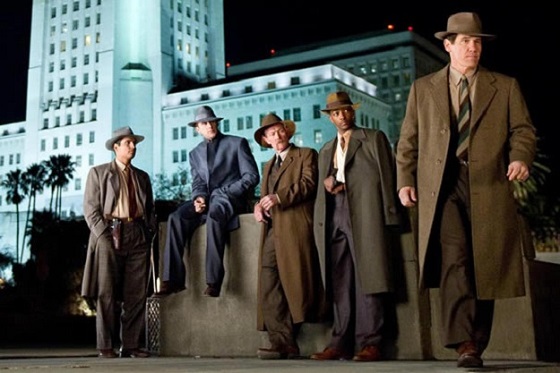
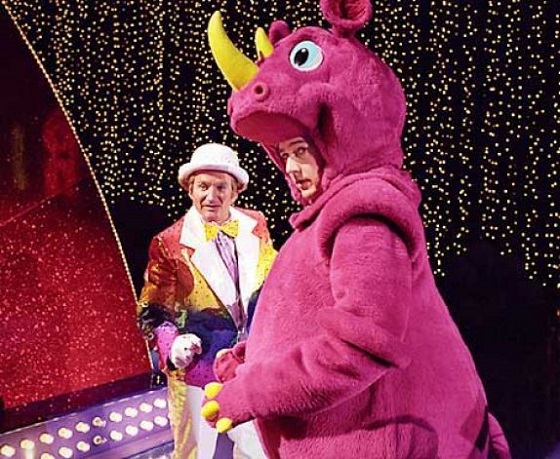
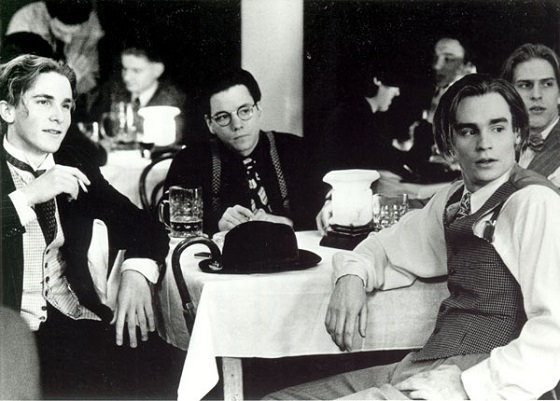
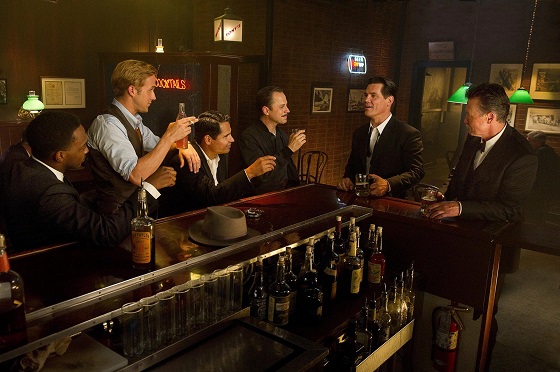
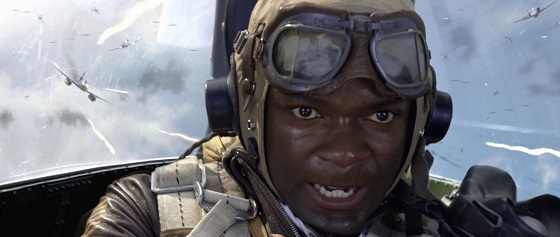
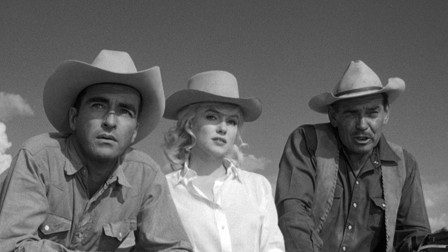

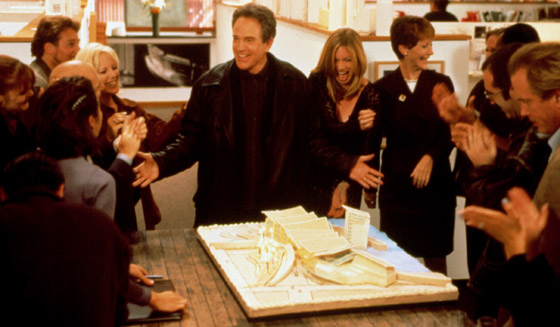
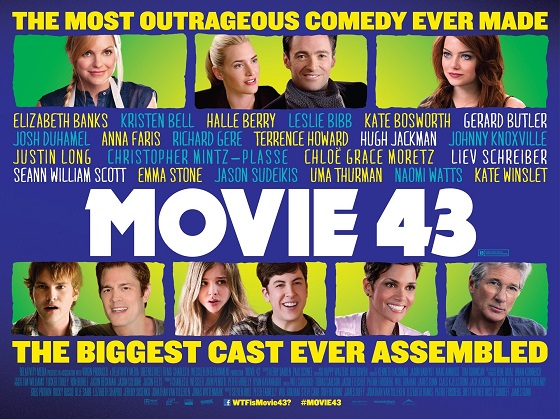
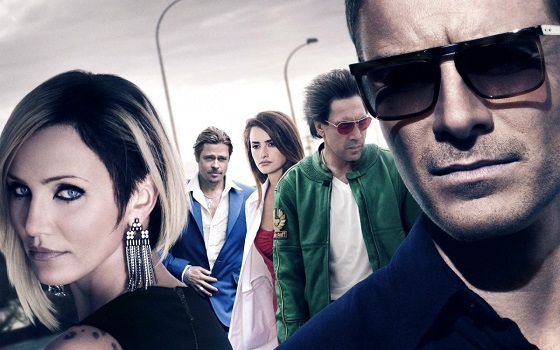
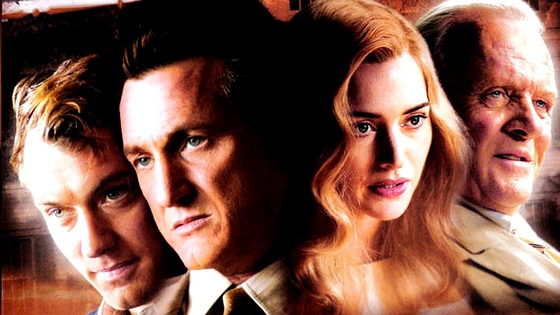

{ 1 comment }
Would you really refer to HIlary Swank as an A-lister? Almost all her movies flop.
Comments on this entry are closed.